Newsletter 1
We’re so glad you’ve joined us for Get Fit 2021 – though we don’t have groups or a competition as in past years, we’ve pumped up the fun with more recipes and tips,
plus more mini-challenges to help you work toward a healthy lifestyle!
If you’re on Facebook, make sure to Like or Follow us there – www.facebook.com/FHNGetFit2021.
If you’re not on Facebook, don’t worry; you’ll still have access to all the information we share and our mini-challenges here.
You can enter any mini-challenge by emailing your entry to us at getfit@fhn.org.
Newsletter 2
We’re a couple weeks into the program, so most of us are probably in the “trying things out” mode.
You’re figuring out if it’s better to exercise at the beginning of the day, the end of the day, or in little bits throughout the day.
Maybe you’ve tried including more fruits and vegetables in your diet, or even found a favorite healthy new recipe.
The nice thing about this year’s challenge is that it’s never too late to get started on a healthy lifestyle.
If you haven’t done much yet, that’s OK – jump in and have fun with us!
Double Your Benefits with Gardening - Gardening is a great way to get some fresh air and exercise, and the fresh veggies you’ll get are a healthy boost, too! The University of Illinois Extension is offering two free webinars
on gardening this spring, starting with a session on perennial vegetables like rhubarb, asparagus, and horseradish on April 22.
Newsletter 3
We’ve had quite a few beautiful days – hopefully, you have been able to get outside and enjoy some fresh air and healthy movement!
Have you tried any of the recipes we’ve shared? We’d like to hear how you and your family liked it.
If you’ve got a recipe review, let us know at getfit@fhn.org.
Get Growing for Some Exercise - Getting the exercise you need doesn’t always look like a “workout” –
the chores you do around the house, walking around while parking and shopping, even the steps you might take to your second-floor office are exercise, too.
We’re thinking about one specific activity this week – gardening.
Working in your garden can help lower your blood pressure and prevent heart disease, depression, and osteoporosis when practiced on a regular basis.
Exercise in the garden gives all of your major muscle groups a good workout including your legs, arms, buttocks, stomach, neck, and back.
And yes, there’s a calorie payoff: Heavy yard work (landscaping, moving rocks, hauling dirt) can burn between 400-600 calories per hour.
Raking and bagging leaves rakes up 350-450 calories per hour, and pulling weeds and planting flowers burns 200-400 calories per hour.
Mowing the lawn uses up about 250-350 calories per hour.
Jeff Restuccio, author of Fitness the Dynamic Gardening Way, suggests making your gardening into a structured exercise routine,
alternating light activities with heavier ones, then a light one, and so on. Rake for a while, then dig holes, then prune.
"Exercise 30 to 60 minutes, then quit, whether everything is planted or not," he advises.
He also recommends raking right-handed 15 times, then left-handed 15 times.
"If you think double digging (going down a foot, turning the soil over, then down another foot, bringing that soil to the top) isn't exercise," he says, "you haven't tried it."
Information courtesy of WebMD and GardeningKnowHow.com
Newsletter 4
Pardon the bad grammar, but doesn’t this spring seem like the spring-iest spring in a long time?
As COVID-19 numbers are going down, and vaccination are going up, our area is opening up a bit and more of us are able to gather in small groups, especially outside. (Have you gotten your vaccine yet? If you haven’t, get it taken care of now with FHN’s online appointment scheduler.)
Some of the warm-weather events we all love are starting to come back, too, from farmers’ markets to baseball games to the promise of concerts in the park later this year.
We’re ready to see friends and family again – cautiously, and wearing masks and staying socially distant when it’s appropriate.
One of our favorite events is the annual FHN Healthy Heart Hustle 5K. The fun, go-at-your-own-pace race raises funds to benefit heart patients in our area through the FHN Cardiology Department.
This year’s HHH can be run virtually or in-person on Saturday, July 17, and you can learn more and register here.
If you are a 5K fan, it has been interesting to watch how that community has adapted to pandemic protocols.
Many events went “virtual,” with racers running or walking their own course on their own time and reporting back to the organizers.
This has created some silly-sounding virtual races, like the KrispyKremeChallenge, the Mom Needs a Run 5K, the
Dad Needs a Run 5K
and of course, the Miles for Migraine.
Even if races aren’t for you, they’re a good example of how goal-setting can help you accomplish what seems like a big challenge.
A 5K is 3.1 miles. Your rate will vary, but most people can walk 3.1 miles in 45 – 60 minutes.
If you walk a slow 20 minutes a day, it can take you up to 3 days to walk a 5K. Why not set a goal to step it up to a 5K in 2 days?
Mind Your Hydration - Getting enough water is an important part of staying healthy. According to the Mayo Clinic, we lose water each day through our breath, perspiration, urine, and bowel movements, so we have to keep replenishing our supply through foods and beverages.
The U.S. National Academies of Sciences, Engineering, and Medicine determined that an adequate daily fluid intake is: About 15.5 cups (3.7 liters) of fluids a day for men and about 11.5 cups (2.7 liters) of fluids a day for women.
(These recommendations cover fluids from water, other beverages and food. About 20 percent of your daily fluid intake usually comes from food and the rest is from drinks.)
Newsletter 5
We have just a few weeks left in this year’s Get Fit program – how are you doing? As the weather warms up, remember to keep drinking enough water throughout the day and while you’re exercising!
As pandemic restrictions ease and restaurants open up, it is going to be very tempting to “take it easy” and dine out more. You can do that in a healthy way, of course – a lot of local restaurants are preparing foods in new, healthier ways – but it’s almost always going to be better for you to eat a healthy, balanced meal at home.
One way you can keep it convenient and keep it healthy is to meal prep. Getting some meals ready for the week doesn’t have to be a day-long cooking extravaganza, and you don’t have to invest in special containers. Chances are, you already have some suitable containers around, like the plastic bags you use to corral carrot and celery sticks in the fridge for a fast snack or the plastic lidded containers you use for leftovers. Start with a little brainstorm session. What healthy main courses could you make with, say, a rotisserie chicken from the grocery?
Newsletter 6
Well, those 12 weeks have gone by quickly! We hope you’ve had fun and learned something new in this year’s pandemic-safe virtual Get Fit 2021.
These days, it’s easy to find just about anything online, but how do you know if you can trust the information you are getting?
If you’re looking for something health-related, look for information from trusted sources like the Centers for Disease Control and Prevention , the U.S. Department of Health and Human Services , the U.S. National Library of Medicine, or the U.S. Department of Agriculture.
When FHN’s dietitians are looking for delicious, healthy recipes, we use EatRight, the website of the Academy of Nutrition and Dietetics. Another great resource for information on healthy eating is MyPlate, which is celebrating its 10th anniversary online this year.
If you’re looking for answers to questions about nutrition or exercise, you can always ask your healthcare provider, too – he or she will be happy to share some good information with you!
Have a great, healthy 2021, and we’ll see you again next year for Get Fit!
What Is HIIT?
High Intensity Interval Training (HIIT) isn’t difficult, and it doesn’t involve hitting anything. It’s simply a term for workouts that involve short periods of intense exercise alternated with recovery periods. HIIT workouts are good if you don’t have a lot of time, because the typical HIIT workout lasts between 10 and 30 minutes.
The high-intensity activity can be almost anything, from sprinting (alternated with jogging) to bicycling (alternating from fast-as-you-can speed to slow, easy speed) and even things like squat jumps or burpees for 60 seconds followed by 90 seconds of walking.
Each fast-and-slow cycle is one round or repetition, so repeat the cycle for 15 to 30 minutes for a full workout.
Miles and Minutes Has Begun
FHN is again inviting families across northwest Illinois to turn their warm-weather chores and fun into cash for their schools with the popular FHN Miles and Minutes program. Three prizes ($2,000, $1,000, and $500) will be awarded in three categories.
Summer exercise like golf, virtual and real-life 5K runs, hikes and walks, and even everyday physical activity like mowing the lawn and gardening can count as exercise – as well as summer workouts for student-athletes age 12 and over. FHN encourages all exercisers to practice safe social distancing.
The program runs through Sunday, August 29. Exercisers can join at any time during the summer. The competition is online-only and there is no charge to participate. Anyone 12 years and older can participate, including student-athletes. You can find more information and register online at www.fhn.org/milesandminutes.

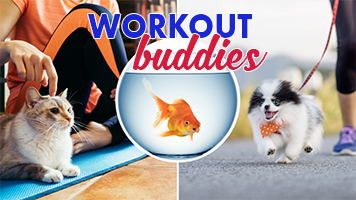

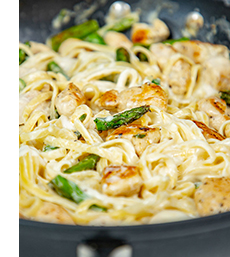
Cauliflower Chicken Alfredo
This healthy recipe subs healthy cauliflower for rich Alfredo sauce!
Print-friendly Version
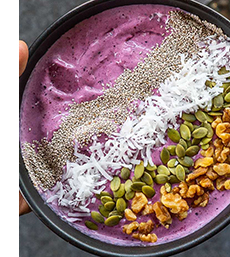
Low-Carb Smoothie Bowls
Looking for a tasty protein pick-me-up? These are perfect!
Print-friendly Version
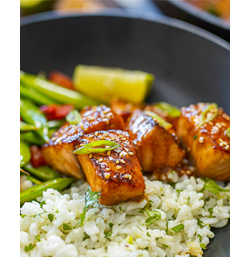
Apricot Ginger Salmon Bowl
This tasty recipe is great for a healthy, quick meal, and the instructions also detail how to use it if you are meal prepping.
Print-friendly Version
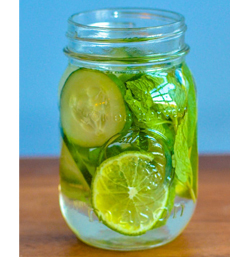
REAL Vitamin Waters
Are you drinking enough water? Here are 4 REAL vitamin waters to help with detox, hydration and energy!
Print-friendly Version
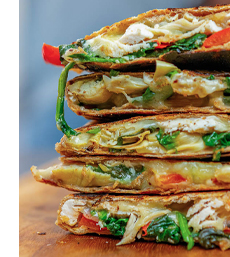
6-Ingredient Spinach Artichoke Quesadillas
These quesadillas are a perfect example of a minimal, full flavor recipe.
Print-friendly Version
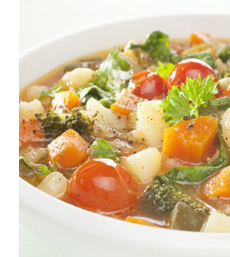
Garden Harvest Soup
Adjust the veggies in this soup based on what you have in your refrigerator.
Get creative with the veggie combination that you use!
Print-friendly Version
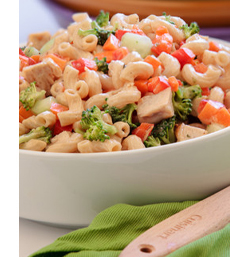
Veggie and Chicken Pasta Salad
This is a quick dinner the whole family can enjoy any time of year.
Try it with a bean-based pasta like lentil or chickpea pasta for added protein and fiber.
Print-friendly Version
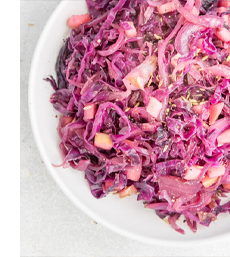
Braised Red Cabbage with Sweet Apples and Onion
The sweet-sour flavor of red cabbage complements roasted chicken, pork loin and root vegetables, too.
Bringing health and flavor together, red cabbage adds to the rainbow on your plate, delivering antioxidant benefits.
Print-friendly Version
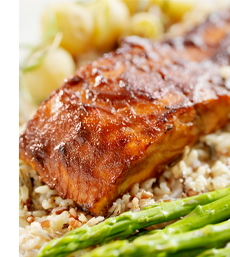
Honey Gingered Salmon
This recipe is simple to make, but impressive – and it packs a healthy punch!
Print-friendly Version
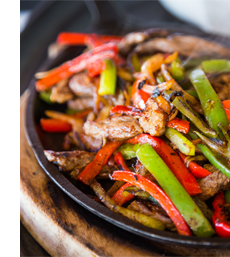
Grilled Lime Chicken Fajitas
Chicken fajitas are one of the best choices when it comes to Mexican food because chicken is a lean protein
and grilling is a healthy cooking method. Also, fajitas are topped with low-carb veggies like onions and green peppers.
Print-friendly Version
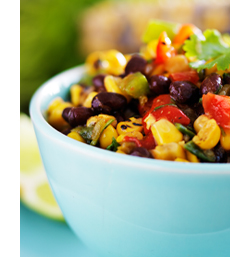
Black Bean and Corn Salad
This salad is perfect for a spring picnic or quick lunch dish and is jam-packed with fiber.
Print-friendly Version